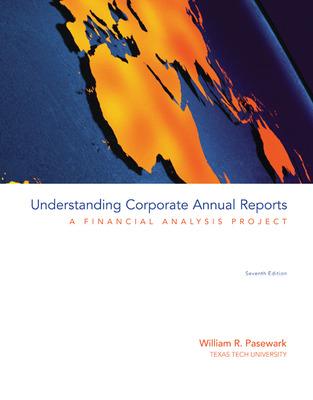Question
WildhorseEnterprises, Inc. operates several stores throughout the western United States. As part of an operational and financial reporting review in a response to a downturn
WildhorseEnterprises, Inc. operates several stores throughout the western United States. As part of an operational and financial reporting review in a response to a downturn in its markets, the company's management has decided to perform an impairment test on five stores (combined). The five stores' sales have declined due to aging facilities and competition from a rival that opened new stores in the same markets. Management has developed the following information concerning the five stores as of the end of fiscal 2019.
Original cost $39,340,000
Accumulated depreciation $9,890,000
Estimated remaining useful life 4 years
Estimated expected future annual cash flows (not discounted) $3,600,000per year
Appropriate discount rate 6percent
- Determine the amount of impairment loss, if any, thatWildhorseshould report for fiscal 2019 and the book value at whichWildhorseshould report the five stores on its fiscal year-end 2019 balance sheet. Assume that the cash flows occur at the end of each year
- Determine the amount of impairment loss, assume that (1) the estimated remaining useful life is 10 years, (2) the estimated annual cash flows are $3,068,570per year, and (3) the appropriate discount rate is7percent.(Round present value factor calculations to 5 decimal places, e.g. 1.25124 and the final answer to 0 decimal places e.g. 5,125.If no loss, enter amount as 0.)
First step is to decide whether there's impairment by conducting the recoverability test, which is comparing undiscounted future cash flows with carrying value on the book (or, book value).
The undiscounted cash flow is the number of years the subject can continue to general cash (in this case, the estimated remaining useful life) multiply by the annual cash flow per year.
Book value is the original cost minus accumulated depreciation of the business units.
If the undiscounted future cash flow is less than the book value, then impairment occurred. Otherwise, no impairment recording is necessary.
The loss of impairment is the difference between book value and fair market value of the subject. Please note that the fair value is not the undiscounted cash flow. You need to calculate the fair value separately by discounting the future cash flow to the present. Again, present value of future cash flow is used as fair value when fair value is not clearly stated or known.
Step by Step Solution
There are 3 Steps involved in it
Step: 1

Get Instant Access to Expert-Tailored Solutions
See step-by-step solutions with expert insights and AI powered tools for academic success
Step: 2

Step: 3

Ace Your Homework with AI
Get the answers you need in no time with our AI-driven, step-by-step assistance
Get Started


